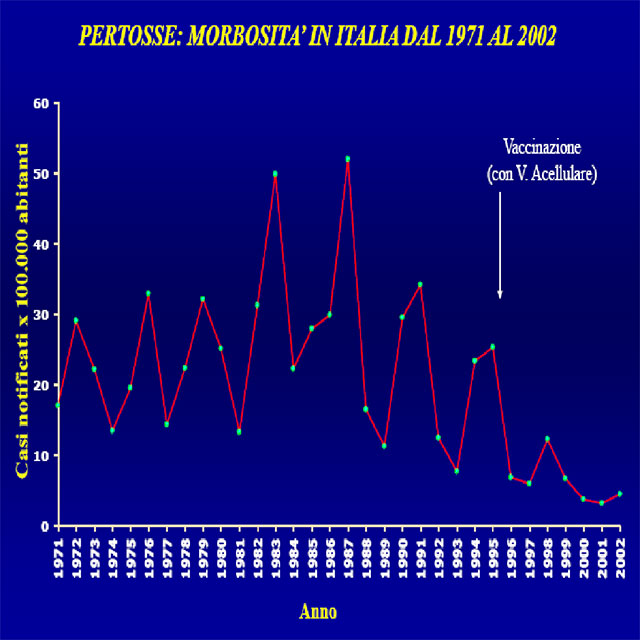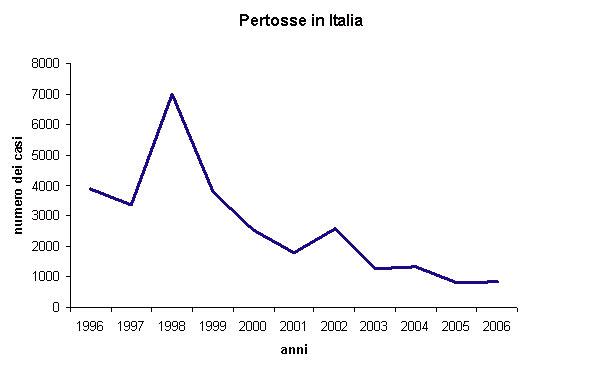Vaccinating against Pertussis (Whooping Cough)
The epidemiological curves comparing pre- and post-vaccination periods show a sharp decrease in the number of cases over the years. It is clear that vaccinations have significantly changed the incidence of diseases for which immunisation exists, thus saving lives, reducing disease outcomes, reducing overall population suffering and improving quality of life.
The disease before and after the vaccination campaign in Italy
Following the introduction of the vaccine a decrease in cases of pertussis was observed. However, it has not yet been eliminated in any country in the world.
DTaP vaccine (Diphtheria-Tetanus-acellular pertussis)

Analysing the epidemiological data on pertussis cases in Italy from 1996 to 2006, it can be seen that the trend shows a peak of almost 7,000 cases reported in 1998. From the end of the 1990s onwards, the trend shows a decrease in the number of cases, up to the minimum of 802 cases identified in 2005.

Number of pertussis cases in Italy from 1996 to 2006 (source: Italian Ministry of Health)
Therefore, pertussis, a disease that is nonetheless widespread globally, has become very rare, especially in countries where generalised childhood vaccination has been introduced. Today, 90% of pertussis cases are recorded in populations where vaccination is not performed, and in these cases it can lead to a high mortality rate in children. In the vaccinated populations, a return of pertussis was observed due to a progressive loss of immunity and, in fact, when the vaccine was introduced 30 years ago booster doses were not given.
In Italy, pertussis is subject to mandatory reporting to the health authorities.
The main complications of pertussis are of two types: pulmonary and cerebral. Pulmonary complications are the most frequent, generally pneumonia which can seriously compromise respiratory functions. Cerebral complications (pertussis encephalopathy) are characterised by convulsions and altered state of consciousness. In one third of cases, pertussis encephalopathy is resolved without consequences, in one third the patient survives presenting permanent brain damage, and in the remaining third the patient dies (Edwards 2008).
In summary, in developed countries the risk of complications compared to the total number of cases is as follows: 5% pneumonia, 1 in 1,000 encephalopathy, 2 in 1,000 death (CDC 2011).
At present, it is unlikely for a young child to be infected by other children. A child is generally infected by an adult or adolescent i.e. by people who have never had the natural disease or had it more than ten years previously or else were vaccinated as children and have not had a booster dose.
Unlike other infectious diseases, pertussis can also affect newborns even if the mother is immune. It appears that the maternal antibodies that make up their early defences are unable to protect them from this infection.



